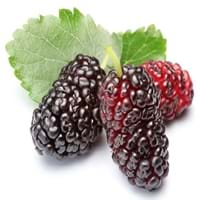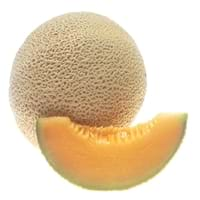Health Benefits
Anti-aging benefits, Boosts immune system, Cancer prevention, Flu treatment, Hair care, Heart care, Improves eye vision, Increases metabolic rate, Kidney stone treatment, Maintains healthy cholesterol level, Skin cleansing, Skin rejuvenation, Treatment of common cold, Treatment of skin Diseases
Cancer prevention, Heart care, Improves eye vision, Prevents diabetes, Reduces stress
General Benefits
Boosts immune system, Controls blood sugar levels, Flu treatment, Improves eye vision, Maintains healthy cholesterol level, Treatment of common cold
Boosts immune system, Cures cough, Cures fever, Digestive aid, Eye care, Helps in weight loss
Skin Benefits
Anti-aging benefits, Skin cleansing, Treatment of skin diseases
Anti-aging benefits, Hydrates skin, Skin rejuvenation, Treatment of skin diseases
Hair Benefits
Protects hair, Regulates hair growth
Good conditioner, Prevents hair loss, Protects hair
Allergy Symptoms
Breathing difficulty, Itching, Nasal congestion, Redness of eyes, Runny nose, Sneezing
Abdominal pains, Anaphylaxis, Breathing difficulty, Diarrhea, Dizziness, Hives, Itching of mouth, Nasal congestion, Nausea, Vomiting
Side Effects
Decrease in blood sugar levels, Allergic reaction
Allergic reaction, Bloating, Indigestion
Best Time to Eat
Best if taken as a breakfast (or empty stomach), As a snack in the late afternoon, Don't consume at night and before bed, Eat the fresh ones, avoid mixing with any other foods, don't eat after meal., Morning time (before lunch)
As a snack in the late afternoon, Don't consume at night and before bed, Eat the fresh ones, avoid mixing with any other foods, don't eat after meal., Morning time (before lunch)
Vitamin B5 (Pantothenic Acid)
Not Available
Vitamin C (Ascorbic Acid)
Vitamin K (Phyllochinone)
Phytosterol
Not Available
Calories in Fresh Fruit with Peel
Not Available
Calories in Fresh Fruit without Peel
Not Available
Calories in Canned Form
Not Available
Not Available
Season
Spring, Summer
Summer
Varieties
Charparral, Pendula, Teas, Bellaire and Lingan
Hales Best Jumbo, Sweet 'N Early Hybrid, Hearts of Gold, Ambrosia, Athena, Honey Bun Hybrid, Fastbreak and Superstar
Color
Pink, Purple, White
Orange
Inside Color
Pink
Creamy Orange
Taste
Tart
Juicy, Musky, Sweet
Origin
China
Africa, India
Soil Type
Clay, Loam
Sandy
Climatic Conditions
Sunny
Dry, Hot
Facts about
- It can take up to 10 years for a tree to produce mulberry fruit.
- Mulberry leaves are fed to silkworms to enhance silk production.
- In Germany, they say that devil uses root of mulberry tree to polish his boots.
- Cantaloupe is known as rock-melon in some parts of the world.
- Christopher columbus first introduced cantaloupes to north america in 1494.
- The name 'Cantaloupe' as it is cultivated in papal gardens of cantaloupes, Italy.
Other Countries
Colombia, Egypt, India, Indonesia, Kenya, Mexico, Pakistan, Peru, Russia, United States of America
Iran, Romania, Turkey, United States of America
Top Importer
Not Available
United States of America
Botanical Name
Morus Alba
Cucumis melo var. cantalupensis
Synonym
Morus atropurpurea or Morus multicaulis
Cucumis melo var. reticulatus
Subkingdom
Tracheobionta
Tracheobionta
Division
Magnoliophyta
Magnoliophyta
Class
Magnoliopsida
Magnoliopsida
Subclass
Alismidae
Dillenhidae
Order
Rosales
Cucurbitales
Family
Moraceae
Cucurbitaceae
Generic Group
Mulberry
Gourd
Difference Between Mulberry and Cantaloupe
We might think that Mulberry and Cantaloupe are similar with respect to nutritional value and health benefits. But the nutrient content of both fruits is different. Mulberry and Cantaloupe Facts such as their taste, shape, color, and size are also distinct. The difference between Mulberry and Cantaloupe is explained here.
The amount of calories in 100 gm of fresh Mulberry and Cantaloupe with peel is 43.00 kcal and Not Available and the amount of calories without peel is Not Available and 34.00 kcal respectively. Thus, Mulberry and Cantaloupe belong to Low Calorie Fruits and Low Calorie Fruits category.These fruits might or might not differ with respect to their scientific classification. The order of Mulberry and Cantaloupe is Rosales and Cucurbitales respectively. Mulberry belongs to Moraceae family and Cantaloupe belongs to Cucurbitaceae family. Mulberry belongs to Morus genus of M. alba species and Cantaloupe belongs to Cucumis genus of C. melo species. Beings plants, both fruits belong to Plantae Kingdom.









